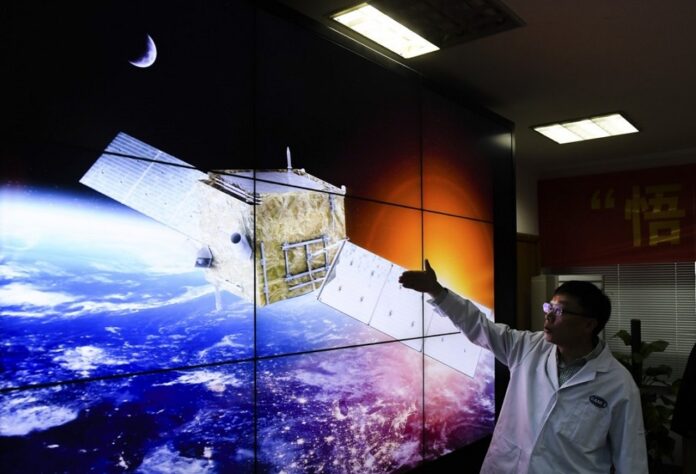
BEIJING (Xinhua) — The following are the highlights of China’s key technology news from the past week:
COSMIC RAYS
An international research team has conducted a precise measurement of the spectrum of protons, the most abundant component of cosmic rays, in an energy range from 40 GeV to 100 TeV (one TeV is one trillion electron volts, corresponding to one trillion times the energy of visible light) with China’s Dark Matter Particle Explorer, also known as Wukong or Monkey King.
The measured spectrum shows that the proton flux increases at hundreds of billions electron volts and then drops at around 14 TeV, indicating the existence of a new spectral feature of cosmic rays.
5G BASE STATIONS
The 10,000th 5G base station was completed in Shenzhen, a southern tech hub in Guangdong Province, on Sept. 26, the city’s industry and information technology bureau said.
According to a government plan, Shenzhen will build a total of 45,000 5G base stations and achieve full 5G network coverage by August 2020.
DISCOVERY ON MOON
China’s lunar rover Yutu-2, or Jade Rabbit-2, discovered an unidentified substance in an impact crater on the far side of the moon. The discovery was made during Yutu-2’s ninth lunar day of exploration on the moon.
The ground controllers designed a driving route for the rover to allow it to conduct scientific detection to the depth of the impact crater and the distribution of the ejecta.
WIND POWER PROJECT
Construction on a wind power project with a power generating capacity of 6 GW began on Sept. 26 in north China’s Inner Mongolia Autonomous Region.
The project is the first phase of a wind power base invested in by the State Power Investment Corp. Ltd. in Siziwang Banner in the city of Ulanqab.
FISH GENE RESEARCH
China has launched a project to construct a high-quality fish genome database and foster fish gene research, according to the Chinese Academy of Science (CAS).
The project, Fish 10,000 Genomes Project, is coordinated by the Institute of Hydrobiology under the CAS, BGI Genomics Institute’s Qingdao branch, Northwest Polytechnical University as well as other institutions. It aims to conduct the genome mapping of 10,000 species of fish living around the world and establish a large-scale, high-quality fish genome database.















































